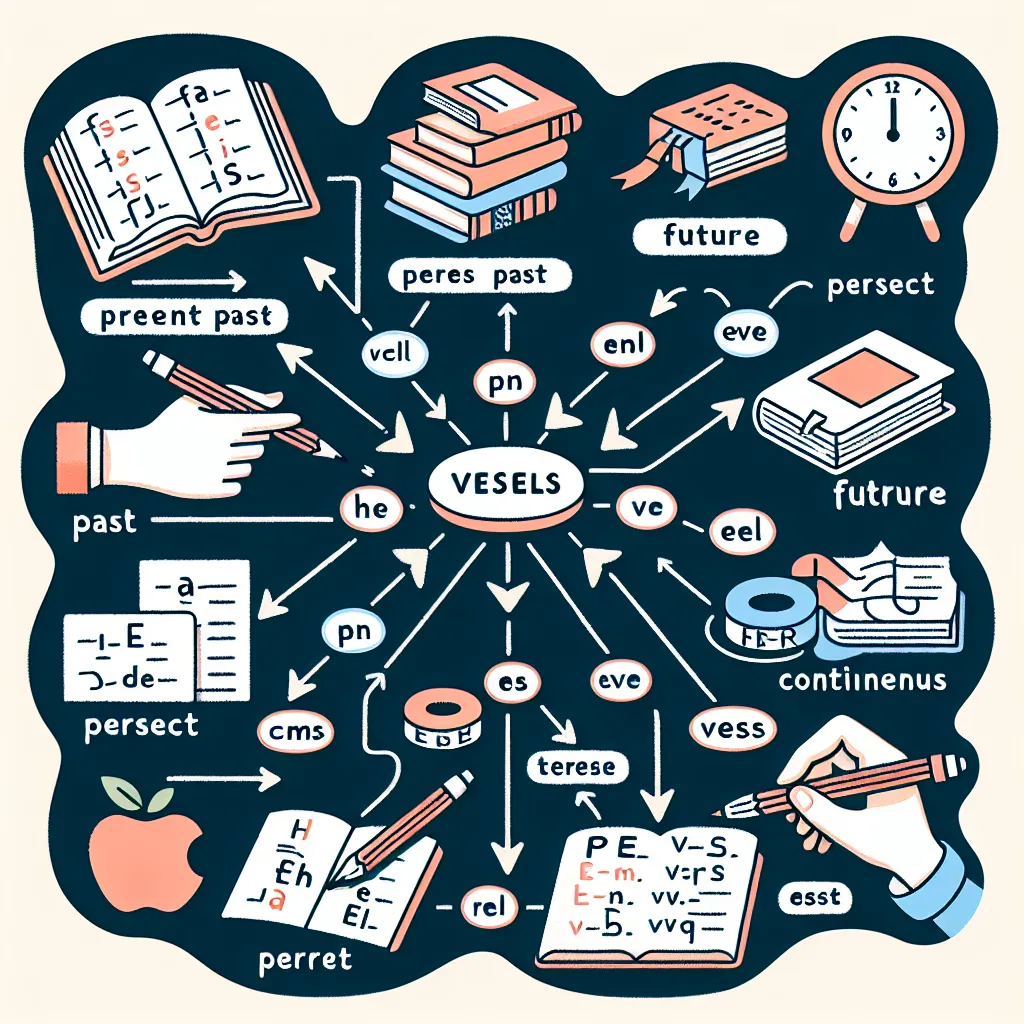Are you ready to embark on a journey to master English verb forms? Whether you’re a beginner looking to build a solid foundation or an advanced learner aiming to refine your skills, understanding verb forms is crucial for effective communication in English. In this comprehensive guide, we’ll explore the intricacies of English verb forms, providing you with the knowledge and tools to enhance your language proficiency.
 English Verb Forms Diagram
English Verb Forms Diagram
Why Are English Verb Forms Important?
Verb forms are the backbone of English grammar. They help us express time, action, and state of being in our sentences. Mastering these forms allows you to:
- Communicate more precisely
- Express complex ideas with clarity
- Improve your writing and speaking skills
- Understand native speakers better
- Perform well in English proficiency tests like IELTS or TOEFL
The Building Blocks: Basic Verb Forms
Before we dive deeper, let’s review the basic verb forms in English:
- Base Form (Infinitive): The simplest form of a verb (e.g., “to walk,” “to eat”)
- Present Tense: Used for current actions or states (e.g., “I walk,” “She eats”)
- Past Tense: Used for completed actions (e.g., “I walked,” “She ate”)
- Past Participle: Used in perfect tenses and passive voice (e.g., “have walked,” “was eaten”)
- Present Participle (-ing form): Used in continuous tenses (e.g., “is walking,” “was eating”)
Understanding these forms is essential for constructing more complex verb structures.
Exploring Advanced Verb Forms
Now that we’ve covered the basics, let’s delve into more advanced verb forms that will take your English to the next level.
Perfect Tenses
Perfect tenses express completed actions or states in relation to a specific time. They are formed using “have/has/had” + past participle.
- Present Perfect: “I have studied English for five years.”
- Past Perfect: “By the time I arrived, the class had already started.”
- Future Perfect: “I will have finished my homework by 8 PM.”
These tenses help you express the duration and completion of actions with precision.
Continuous (Progressive) Tenses
Continuous tenses show ongoing actions. They are formed using “be” + present participle (-ing form).
- Present Continuous: “I am learning new vocabulary right now.”
- Past Continuous: “While I was studying, my friend called.”
- Future Continuous: “This time next week, I will be taking my IELTS exam.”
Mastering continuous tenses allows you to describe actions in progress and create more vivid narratives.
 English Verb Tense Timeline
English Verb Tense Timeline
Perfect Continuous Tenses
Perfect continuous tenses combine aspects of both perfect and continuous tenses. They express the duration of ongoing actions up to a certain point in time.
- Present Perfect Continuous: “I have been studying English for two hours.”
- Past Perfect Continuous: “I had been working on my essay for three days before I submitted it.”
- Future Perfect Continuous: “By next month, I will have been living in London for a year.”
These complex tenses add depth and precision to your language use, allowing you to express nuanced temporal relationships.
Practical Tips for Mastering English Verb Forms
Now that we’ve explored various verb forms, here are some practical tips to help you master them:
-
Practice regularly: Consistent practice is key to internalizing verb forms. Set aside time each day to work on exercises and drills.
-
Use context: Learn verb forms within sentences and real-life contexts rather than in isolation. This helps you understand how and when to use each form.
-
Create your own examples: After learning a new verb form, challenge yourself to create original sentences using it. This reinforces your understanding and creativity.
-
Read extensively: Exposure to authentic English texts will help you see verb forms in action. Pay attention to how native speakers and writers use different tenses.
-
Listen actively: Pay close attention to verb forms when listening to English podcasts, news, or conversations. Try to identify the tenses being used.
-
Keep a verb journal: Maintain a notebook where you list new verbs you encounter, along with their various forms and example sentences.
-
Use technology: Utilize language learning apps and online resources that offer interactive exercises focused on verb forms.
-
Teach others: Explaining verb forms to someone else can solidify your own understanding. Consider joining a language exchange program or study group.
Common Pitfalls to Avoid
As you work on mastering English verb forms, be aware of these common mistakes:
- Mixing up irregular verbs (e.g., “I goed” instead of “I went”)
- Forgetting to change the verb form in reported speech
- Using the wrong auxiliary verb (e.g., “I am study” instead of “I am studying”)
- Overusing certain tenses, especially the present simple
- Neglecting subject-verb agreement, especially with complex subjects
By being mindful of these potential errors, you can focus on avoiding them in your own language use.
Advancing Your Skills: Next Steps
Once you’ve gained confidence in using various verb forms, consider these steps to further enhance your English language skills:
-
Take on challenging texts: Read academic papers, literary works, or specialized articles in your field of interest to encounter more sophisticated verb usage.
-
Practice writing: Start a blog or journal in English, focusing on using a variety of verb forms accurately.
-
Engage in debates: Participating in English language debates or discussions will push you to use complex verb forms in real-time communication.
-
Prepare for proficiency tests: If you’re aiming for IELTS or TOEFL, focus on the specific verb forms and structures commonly tested in these exams.
-
Seek feedback: Work with a language partner or tutor who can provide constructive criticism on your use of verb forms.
For more advanced grammar tips, check out our guide on how to master English grammar deeply. If you’re interested in improving your English through interactive methods, our article on how to improve English by engaging in debates offers valuable insights.
Conclusion
Mastering English verb forms is a journey that requires dedication, practice, and patience. By understanding the various tenses and their uses, you’ll be able to express yourself more accurately and fluently in English. Remember that language learning is a gradual process, so celebrate your progress along the way. Keep practicing, stay curious, and don’t be afraid to make mistakes – they’re an essential part of the learning process.
We encourage you to apply what you’ve learned from this Deep Dive Into English Verb Forms in your daily language practice. Share your experiences, challenges, or questions in the comments below. And for those looking to refine their grammar skills even further, don’t miss our article on advanced grammar for professional communication.
Happy learning, and may your journey with English verb forms be both rewarding and enlightening!




